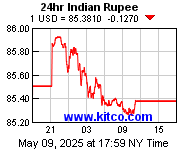Black Gold has lost its sheen, and how! Today, the cost of a litre of petrol or diesel for Indian oil majors is less than the price of the bottle of packaged water that you buy.
Back-of-the-envelope calculations show that a litre of petrol costs about Rs 11 and diesel about Rs 13, excluding transportation and sundry other charges etc. In contrast, you pay Rs 12-15 for a one-litre bottle of water.
Here's how the arithmetic goes: A barrel of crude oil contains about 190 litres. At $38 a barrel, the current price in the international market, each litre of crude works out to Rs 10, taking the exchange rate at Rs 50 to a dollar.
On an average, approximately 28-29 litres of petrol and 85 litres of diesel are refined from each barrel of crude.
Admittedly, this figure can vary according to the type of crude being processed and the technology deployed in a refinery. So how much would the price of a litre of motor fuel be after incurring the cost of refining, if there were no other charges?
The calculation is so mind-boggling that sometimes even executives of oil marketing companies get confused by the myriad central and state taxes - levied at incremental rates - and complex charges such as "freight equalisation levy'' and dealer margins, etc. Such levies taken together constitute 45-55% of the sale price of petrol or diesel.
So if petrol costs a little over Rs 45 a litre in Delhi pumps, taxes and levies make up about Rs 22 and another Rs 12 constitutes the oil-marketing firm's profit. That leaves a basic cost of about Rs 11 per litre. Similarly, at Rs 32 a litre - the Delhi price of diesel - the actual cost can be taken as Rs 13 as the companies are making a profit of almost Rs 3 a litre.
These calculations are admittedly simplistic and do not take into account other products such as kerosene, jet fuel, cooking gas, naphtha, etc., that are produced along with petrol and diesel and have a bearing on the final cost of each product. However, there won't be big difference between these figures and the figures worked out by the industry.
With crude projected to slide further in the coming days as the global slowdown gets a firmer grip on industry and pushes demand further down, the obvious question is: When will our pump prices go down further?
ToI has repeatedly said this will happen just before the elections are announced, possibly around February. In the meantime, the government is looking to rejig the petro-tax regime to make way for lower prices without hurting oil marketing companies that have accumulated huge losses during the extended run of high crude prices.
Subscribe to:
Post Comments (Atom)


No comments:
Post a Comment